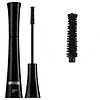What's inside
What's inside
 Key Ingredients
Key Ingredients

 Benefits
Benefits

 Concerns
Concerns

 Ingredients Side-by-side
Ingredients Side-by-side

Water
Skin ConditioningAcrylates Copolymer
Cera Alba
EmollientCopernicia Cerifera Cera
EmollientStearic Acid
CleansingTriethanolamine
BufferingAlcohol
AntimicrobialPolyvinyl Alcohol
Hydroxyethylcellulose
Emulsion StabilisingPolysorbate 80
EmulsifyingCetyl Alcohol
EmollientGlyceryl Stearate
EmollientPhenoxyethanol
PreservativePropylene Glycol
HumectantStearyl Alcohol
EmollientMethylparaben
PreservativeHexylene Glycol
EmulsifyingEthylparaben
PreservativeButylene Glycol
HumectantDecylene Glycol
Skin ConditioningSodium Acetate
BufferingEthylhexylglycerin
Skin ConditioningTotarol
AntioxidantCellulose
AbsorbentCI 77499
Cosmetic ColorantWater, Acrylates Copolymer, Cera Alba, Copernicia Cerifera Cera, Stearic Acid, Triethanolamine, Alcohol, Polyvinyl Alcohol, Hydroxyethylcellulose, Polysorbate 80, Cetyl Alcohol, Glyceryl Stearate, Phenoxyethanol, Propylene Glycol, Stearyl Alcohol, Methylparaben, Hexylene Glycol, Ethylparaben, Butylene Glycol, Decylene Glycol, Sodium Acetate, Ethylhexylglycerin, Totarol, Cellulose, CI 77499
Water
Skin ConditioningCopernicia Cerifera Cera
EmollientCyclopentasiloxane
EmollientOryza Sativa Cera
Skin ConditioningHydrogenated Olive Oil Stearyl Esters
Emulsion StabilisingAlcohol Denat.
AntimicrobialStearic Acid
CleansingPalmitic Acid
EmollientTriethanolamine
BufferingAcacia Senegal Gum
MaskingEuphorbia Cerifera Cera
AstringentPropylene Glycol
HumectantPhenoxyethanol
PreservativeVp/Va Copolymer
Aminomethyl Propanediol
BufferingIsopropyl Alcohol
SolventPolyvinyl Alcohol
Chlorphenesin
AntimicrobialEthylhexylglycerin
Skin ConditioningTocopheryl Acetate
AntioxidantBiotin
AntiseborrhoeicGlycerin
HumectantT-Butyl Alcohol
PerfumingButylene Glycol
HumectantHydrolyzed Collagen
EmollientCarbomer
Emulsion StabilisingSodium Lactate
BufferingPolysorbate 20
EmulsifyingPalmitoyl Tripeptide-1
Skin ConditioningPalmitoyl Tetrapeptide-7
Skin ConditioningCI 77499
Cosmetic ColorantWater, Copernicia Cerifera Cera, Cyclopentasiloxane, Oryza Sativa Cera, Hydrogenated Olive Oil Stearyl Esters, Alcohol Denat., Stearic Acid, Palmitic Acid, Triethanolamine, Acacia Senegal Gum, Euphorbia Cerifera Cera, Propylene Glycol, Phenoxyethanol, Vp/Va Copolymer, Aminomethyl Propanediol, Isopropyl Alcohol, Polyvinyl Alcohol, Chlorphenesin, Ethylhexylglycerin, Tocopheryl Acetate, Biotin, Glycerin, T-Butyl Alcohol, Butylene Glycol, Hydrolyzed Collagen, Carbomer, Sodium Lactate, Polysorbate 20, Palmitoyl Tripeptide-1, Palmitoyl Tetrapeptide-7, CI 77499
Ingredients Explained
These ingredients are found in both products.
Ingredients higher up in an ingredient list are typically present in a larger amount.
Butylene Glycol (or BG) is used within cosmetic products for a few different reasons:
Overall, Butylene Glycol is a safe and well-rounded ingredient that works well with other ingredients.
Though this ingredient works well with most skin types, some people with sensitive skin may experience a reaction such as allergic rashes, closed comedones, or itchiness.
Learn more about Butylene GlycolCi 77499 is also hydrated iron III oxide. It is created from mixing red and black iron oxides. This helps give shades of darkness to a product.
Iron III oxides are classified as inorganic chemicals for coloring.
This ingredient comes from a palm tree native to Brazil. This ingredient is used to thicken texture and leaves behind a film when applied.
Ethylhexylglycerin (we can't pronounce this either) is commonly used as a preservative and skin softener. It is derived from glyceryl.
You might see Ethylhexylglycerin often paired with other preservatives such as phenoxyethanol. Ethylhexylglycerin has been found to increase the effectiveness of these other preservatives.
Phenoxyethanol is a preservative that has germicide, antimicrobial, and aromatic properties. Studies show that phenoxyethanol can prevent microbial growth. By itself, it has a scent that is similar to that of a rose.
It's often used in formulations along with Caprylyl Glycol to preserve the shelf life of products.
We don't have a description for Polyvinyl Alcohol yet.
Propylene Glycol is an odorless, colorless liquid. As a humectant, it helps skin retain moisture. It also aids in delivering active ingredients.
Another role of this ingredient is preventing a product from melting or freezing. Propylene glycol also adds antimicrobrial properties to a product, elongating product lifespan.
This ingredient is considered an organic alcohol and commonly added into both cosmetics and foods.
Those with sensitive skin or conditions may develop a rash when using this ingredient.
Learn more about Propylene GlycolStearic Acid is a fatty acid. It is an emollient, emulsifier, and texture enhancer.
As an emollient, stearic acid helps soften skin. It aids the skin's protective barrier by preventing water loss. It also provides a gentle cleansing effect without stripping away natural oils.
Stearic acid may also be used to enhance the texture of products. It can add volume and stabilize ingredients such as water and oil. This can help water and oil ingredients from separating.
Sources of stearic acid include animal or vegetable fats/oils such as coconut or shea. It can be naturally found in butter, cocoa butter, shea butter, vegetable fats, and animal tallow.
This ingredient may not be Malassezia folliculitis, or fungal-acne safe.
Learn more about Stearic AcidTriethanolamine is an emulsifier and pH adjuster. It is created using ethylene oxide and ammonia. This gives Triethanolamine a nitrogen core and a similar scent to ammonia.
As an emulsifier, it prevents ingredients from separating and enhances texture by adding volume to a product.
PH adjusters are common in cosmetic products. The pH of a product can affect the effectiveness of other ingredients. A product with a high pH may also irritate the skin.
Learn more about TriethanolamineWater. It's the most common cosmetic ingredient of all. You'll usually see it at the top of ingredient lists, meaning that it makes up the largest part of the product.
So why is it so popular? Water most often acts as a solvent - this means that it helps dissolve other ingredients into the formulation.
You'll also recognize water as that liquid we all need to stay alive. If you see this, drink a glass of water. Stay hydrated!
Learn more about Water